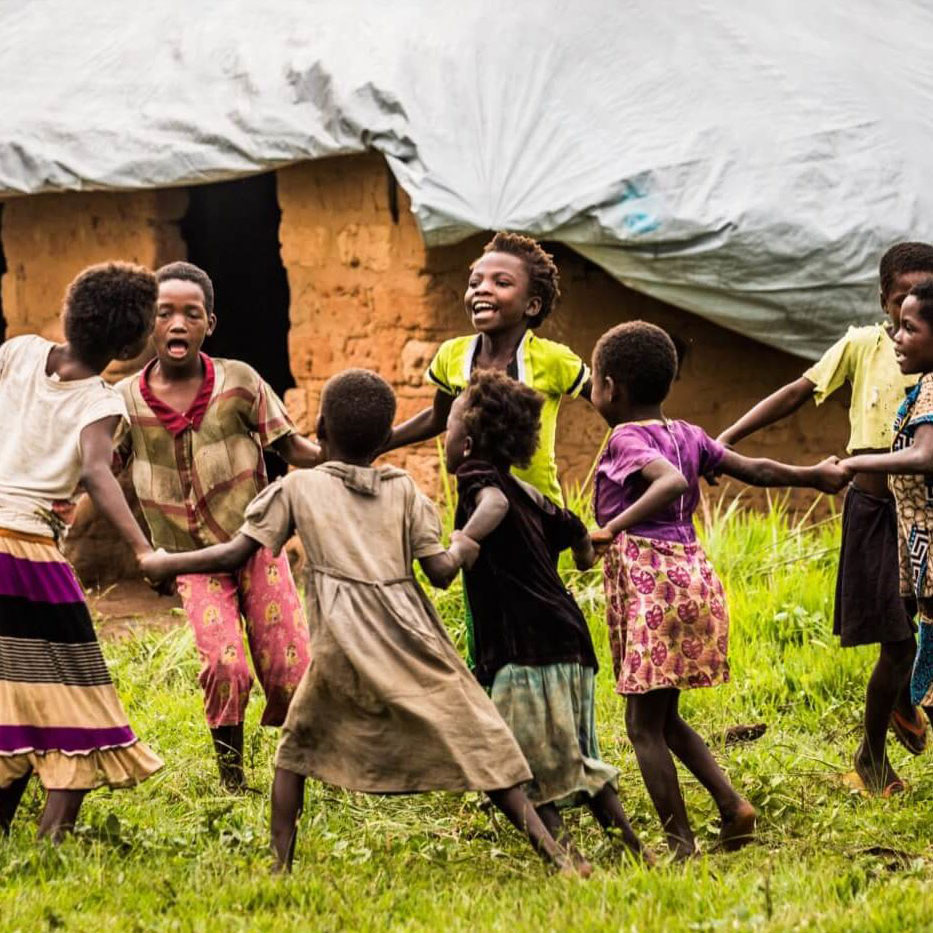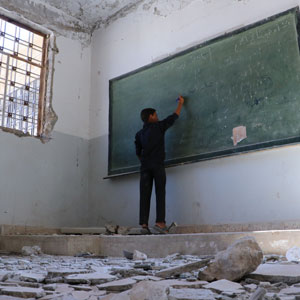GCPEA News
UN agencies in call to ban use of universities as barracks and bases
University World News, November 23, 2012
Brendan O’Malley 23 November 2012 Issue No:249
A global coalition of United Nations agencies and international NGOs supporting education and human rights has called for governments to implement a “clear and unamibiguous” ban on the use of schools and universities as barracks and bases during conflicts.
A ban on all military use of education institutions is needed because it makes them targets for attack by opposing forces, endangers students’ lives and disrupts and harms education, the study said.
“The moment troops establish a base inside a school or university, they can turn it into a target for attack,” said Diya Nijhowne, director of the Global Coalition to Protect Education from Attack. “When soldiers use schools and universities they are often putting their own convenience over the safety and education of students.”
In most conflicts in the past seven years armed forces, pro-government armed groups and non-state armed groups have used schools and universities for military purposes – whether as barracks, logistics bases, operational headquarters, weapons and ammunition caches, detention and interrogation centres, firing and observation positions, or recruitment grounds, according to a study released by the coalition last week.
Between January 2005 and October 2012 armed forces and armed groups used education buildings and facilities in at least 24 countries – a substantial majority of the countries with armed conflicts during this period – says the 77-page study, Lessons in War: Military use of schools and other education institutions during conflict.
They included countries in Africa, Asia, Europe, the Middle East and South America.
Intolerable damage
Sometimes soldiers take over a building entirely, but often they use just a part of a school or university – some classrooms, an entire floor, the playground – and in doing so expose students to attack and other violence.
In the worst cases, students have been injured and killed and education facilities damaged or destroyed as belligerent forces attacked them because of the presence of military forces.
For example, from June to December 2011, Yemeni government forces occupied the Superior Institute for Health Science, a tertiary institute for pharmacists and physicians’ assistants, in Taizz.
They placed a machine gun mounted on an armoured vehicle in the yard and dozens of troops remained inside the medical laboratory and the pharmacology department and on the roof, even when classes began. The troops routinely fired machine gun and mortar rounds from the institute while it was in session.
On 17 October, a 60-year-old father was shot dead at the gate of the institute when he came to register his son for classes. Upon hearing shots near the gate, several students and teachers rushed outside and reportedly saw a Central Security officer standing over the dead man with his gun pointed at him.
On 25 October, a 53-year-old dormitory guard was killed in crossfire between the security forces and opposition fighters.
“Education institutions should be places of learning and safety, not soldiering and fear,” Nijhowne said. “Governments that have learned from their own experiences of war that they can pursue military operations without endangering schools or universities should encourage other countries to follow their lead.”
The coalition is dedicated to addressing the problem of violent political and military attacks on students, teachers, schools and universities worldwide and its leading members include Education Above All, Human Rights Watch, Save the Children International, Scholar Rescue Fund, UNESCO, the United Nations Refugee Agency and the United Nations Children’s Fund.
Military use of education institutions can cause damage to already-fragile education infrastructures and systems, the coalition said.
Students’ safety may also be jeopardised by the misconduct of poorly trained or undisciplined soldiers within their school or university. The risks include sexual abuse and harassment and the accidental or misdirected firing of weapons or explosion of ordnance.
The educational consequences of military use of schools and other education institutions include high dropout rates, reduced enrolment, lower rates of transition to higher education levels, overcrowding and loss of instructional hours. Girls are particularly negatively affected, the study says.
By contrast, access to safe learning facilities provides important protections for students during times of armed conflict, the coalition said. Safe schools and universities provide life-saving information, mitigate the psychosocial impact of war, and protect children from trafficking and recruitment by armed groups.
In the long term, good education promotes peace and post-conflict reconstruction and helps young people develop the skills and qualifications they need to build lives for themselves and prosperity for their communities.
The countries with reported military use of education institutions between 2005 and October 2012 are: Afghanistan, Burma-Myanmar, Central African Republic, Chad, Colombia, Cote d’Ivoire, Democratic Republic of Congo, Georgia, India, Iraq, Israel-occupied Palestinian Territory, Libya, Mali, Nepal, Pakistan, the Philippines, Somalia, South Sudan, Sri Lanka, Sudan, Syria, Thailand, Uganda and Yemen.
The study distinguishes between use of education institutions by armed forces in pursuit of a military advantage, and instances where forces establish a presence in or around a school, college or university, often at the request of community leaders or local authorities, to protect them from an immediate and compelling security threat against the school itself, or the teachers and students.
Recommendations
The study’s main recommendation is for prohibition of military use of schools, universities and other education institutions during times of war.
At a minimum, it calls for armed forces’ obligations under international humanitarian and human rights law to be made explicit, including in legislation, and in military manuals, policies and training.
“This means prohibiting the military use of schools and universities while they continue to be used as education institutions. It also means safeguarding the right to education by considering access, availability and quality of education when planning and implementing military strategy, thereby restricting military use of learning facilities to the greatest extent possible,” the study concludes.
The coalition says there is an urgent need to offer soldiers and their commanders clear guidance on how to abide by their obligations under international law in the heat of battle.
“When countries go to war, education facilities usually end up on the battlefield,” Nijhowne said. “Governments need to send a clear message that even during times of armed conflict, access to a safe education should be a priority, and armed forces need to respect students’ right to education.”
The study therefore calls for the development of standards at the state and international levels that operationalise the requirements of international humanitarian and human rights law to protect civilians, civilian buildings and the right to education, the report says.
Armed forces’ obligations to respect and ensure students’ security and right to education needs to be made more explicit, it argues.
Good practice
Restrictions on military use of education institutions is not a new idea.
In 1621, Sweden’s King Gustavus II Adolfus promulgated ‘Articles of War’ that included the instructions that “No man shall set fire upon any school or spoil them any way, except he be commanded” and “No soldier shall abuse any colleges or schools”.
Later, during the Thirty Years War in Europe, Gustavus ordered that every soldier convicted of any such disorder be punished with death.
The study highlights examples of current good practice in countries affected by armed conflict. Some governments have adopted policies that explicitly ban or restrict militaries from using education facilities.
For example, Ireland has domestic legislation banning military forces from using schools, and the Philippines bans use of “public infrastructure, such as schools, hospitals and rural health units”.
In India and Colombia, courts have ordered troops out of education buildings they were occupying. And Colombia has adopted a military policy banning the use of education establishments, including colleges and schools.
The coalition says a clear ban on military use goes further than the requirements of international law – which currently offers more protection to religious buildings and hospitals than to education institutions – and has the advantage of providing an unambiguous rule that is easy to convey to commanders and troops.
Steven Haines, professor of public international law at the University of Greenwich, is helping the coalition draw up a set of guidelines on military use of education buildings. The guidelines should be easily translated into rules of engagement.
Haines is a retired naval officer and former member of the Central Policy Staff in the UK’s Ministry of Defence, and believes military commanders will not necessarily be averse to adapting their conduct of operations to offer better protection of schools and universities, even where a ban on military use does not apply.
“Responsible commanders have an eye on what they are going to do when the fighting has finished. They have a keen understanding of what they will need to do to put infrastructure back in place. The longer-term impact of military action on education is a part of this. So good commanders will be interested,” he said.
Disclaimer
All reader responses posted on this site are those of the reader ONLY and NOT those of University World News or Higher Education Web Publishing, their associated trademarks, websites and services. University World News or Higher Education Web Publishing does not necessarily endorse, support, sanction, encourage, verify or agree with any comments, opinions or statements or other content provided by readers.




